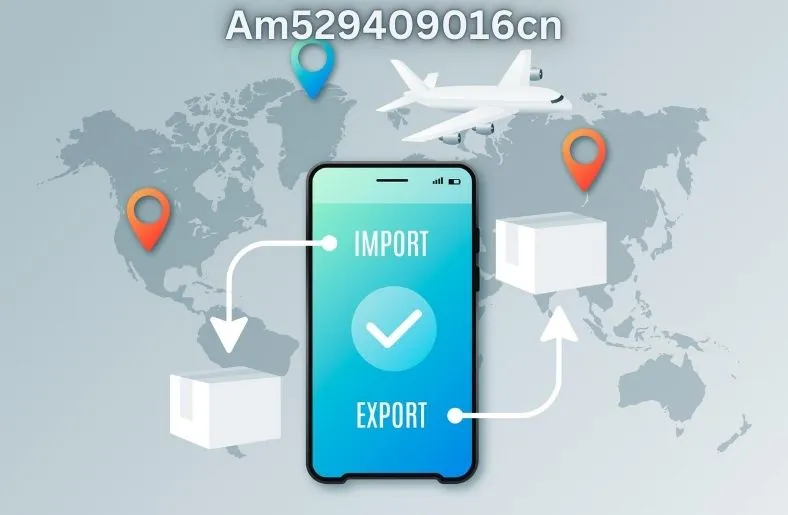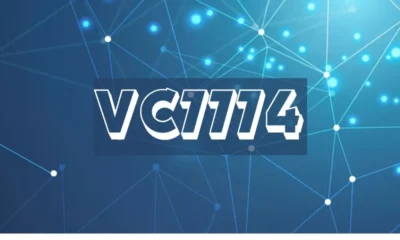Tech
Exploring Compliancia: Everything You Need to Know

Compliancia is a critical aspect of modern business operations, encompassing the adherence to laws, regulations, and industry standards to ensure ethical practices and mitigate risks. In this comprehensive guide, we delve into the world of compliance, exploring its evolution, significance, and the key elements that businesses need to know to establish effective compliance programs. From understanding the concept of compliance to navigating the complex landscape of regulatory requirements, this article aims to provide a detailed overview of Compliancia and equip readers with essential insights to enhance their compliance practices.
The Concept of Compliance
Compliance is like following the rules at a fancy dinner party – necessary for smooth sailing and not getting kicked out. It’s about adhering to laws, regulations, and standards set by authorities.
Evolution and Significance of Compliancia
Compliancia may sound like a snazzy new dance move, but it’s actually the evolving field of keeping businesses in line with ever-changing rules. Its significance lies in ensuring companies play by the book to avoid legal trouble and maintain trust.
Importance of Compliance in Business
Ensuring Legal and Ethical Practices
Compliance is the superhero cape that shields businesses from the dark forces of legal trouble. It ensures they operate ethically and within the law, protecting both the company and its reputation.
Building Trust with Stakeholders
Trust is like the special sauce in a successful business recipe. Compliance helps build trust with customers, investors, and regulators by showing that a company is reliable, transparent, and playing fair.
Key Regulations and Standards in Compliancia
Overview of Major Regulatory Bodies
Regulatory bodies are like the referees of the business world, making sure everyone plays by the rules. Understanding and complying with regulations from bodies like the SEC and FDA is crucial for staying in the game.
Common Compliance Frameworks and Guidelines
Compliance frameworks are like the blueprint for a successful business house – they provide a structure for companies to follow. Guidelines such as ISO standards and GDPR help businesses navigate the complex world of compliance.
Implementing an Effective Compliance Program
Developing a Compliance Strategy
Creating a compliance strategy is like plotting a treasure map to navigate the compliance jungle. It involves assessing risks, defining objectives, and implementing measures to keep the ship sailing smoothly.
Establishing Compliance Policies and Procedures
Policies and procedures are like the guardrails on a rollercoaster – they keep things on track and prevent disasters. Establishing clear guidelines and processes ensures everyone in the company knows how to comply with rules and regulations.
Compliance Challenges and Best Practices
Identifying Common Compliance Pitfalls:
Navigating the world of compliance can feel like tiptoeing through a regulatory minefield. Common pitfalls include overlooking regulatory changes, failing to document compliance efforts, and treating compliance as a one-time task rather than an ongoing commitment. Avoiding these pitfalls requires a keen eye for detail, a proactive approach to compliance monitoring, and a willingness to adapt to evolving regulations.
Best Practices for Overcoming Compliance Challenges:
To conquer compliance challenges, organizations must embrace a proactive mindset. This includes conducting regular compliance audits, investing in compliance training for employees, leveraging technology for streamlined compliance processes, and fostering a culture of compliance awareness throughout the organization. By staying ahead of the compliance curve and continuously improving compliance practices, organizations can navigate the complexities of regulatory requirements with confidence.
Technology Solutions for Compliance Management
Role of Technology in Streamlining Compliance Processes:
Technology serves as a powerful ally in the quest for compliance excellence. From automated compliance monitoring tools to sophisticated data analytics platforms, technology streamlines compliance processes, improves accuracy, and enhances efficiency. By harnessing the power of technology, organizations can stay ahead of regulatory changes, reduce compliance risks, and demonstrate a commitment to best practices in compliance management.
Popular Compliance Management Software:
In the realm of compliance management software, options abound. Leading solutions such as Compliance Cloud, Compliance Manager, and RegTech Pro offer a range of features including risk assessment tools, compliance tracking dashboards, and customizable reporting capabilities. These software solutions empower organizations to centralize compliance efforts, enhance collaboration among team members, and achieve a higher level of compliance maturity.
Training and Education for Compliance Awareness
Importance of Employee Training in Compliance:
Effective compliance management begins with a well-trained workforce. Employee training programs play a crucial role in raising awareness of compliance requirements, fostering a culture of compliance accountability, and equipping employees with the knowledge and skills needed to uphold regulatory standards. By investing in ongoing training and education initiatives, organizations can empower employees to become compliance champions and strengthen overall compliance practices.
Creating a Culture of Compliance Awareness:
Building a culture of compliance awareness requires more than just a one-time training session. It involves integrating compliance considerations into daily operations, communicating the importance of compliance from top to bottom, and recognizing and rewarding compliance excellence. By fostering a culture where compliance is viewed as a shared responsibility and a core value, organizations can embed compliance awareness into the fabric of their organizational culture.
Future Trends in Compliancia
Emerging Technologies Impacting Compliance:
The future of compliance is shaped by emerging technologies such as artificial intelligence, blockchain, and data analytics. These technologies offer innovative solutions for enhancing compliance monitoring, improving data security, and automating regulatory reporting. As organizations embrace these technologies, they can expect to see increased efficiency, greater transparency, and enhanced compliance outcomes.
Predictions for the Evolution of Compliance Practices:
Looking ahead, the evolution of compliance practices is marked by a shift towards proactive, risk-based compliance strategies. Organizations will increasingly focus on predictive compliance analytics, real-time monitoring capabilities, and adaptive compliance frameworks. By leveraging technology, fostering a culture of compliance, and staying attuned to regulatory trends, organizations can navigate the ever-changing compliance landscape and position themselves for success in the future of compliancia.In conclusion, compliance plays a pivotal role in safeguarding businesses, fostering trust with stakeholders, and promoting a culture of integrity and accountability. By staying informed about key regulations, implementing robust compliance programs, leveraging technology solutions, and prioritizing education and awareness, organizations can navigate the complex compliance landscape with confidence. As we look towards the future, embracing emerging trends and evolving best practices will be essential for businesses to adapt and thrive in an increasingly regulated environment.
Frequently Asked Questions
What is the importance of compliance in business?
Compliance is crucial for businesses as it ensures adherence to laws, regulations, and standards, thereby reducing legal risks, fostering trust with stakeholders, and upholding ethical practices.
How can technology help in compliance management?
Technology plays a significant role in streamlining compliance processes through automation, data management, and analytics, enabling organizations to track and monitor compliance efforts more efficiently.
What are the common compliance challenges faced by businesses?
Common compliance challenges include keeping up with changing regulations, managing compliance across multiple jurisdictions, ensuring employee awareness and adherence, and balancing compliance with operational efficiency.
How can businesses prepare for future compliance trends?
Businesses can prepare for future compliance trends by staying informed about emerging technologies, regulatory developments, and industry best practices, while also fostering a proactive and adaptive compliance culture within the organization.
Tech
Exploring wqd76543: How It’s Redefining Technological Frameworks

In today’s fast-evolving technological landscape,WQD76543 innovation is the key to keeping pace with the demands of industries and consumers alike. Among the myriad of advancements, one emerging entity that is creating a significant ripple effect across multiple sectors is the mysterious and enigmatic WQD76543. But what exactly is this technology, and how is it reshaping the frameworks that govern modern-day systems? Let’s take a closer look at what WQD76543 is and explore its transformative impact.
What is WQD76543?
At its core, WQD76543 is an advanced system, platform, or framework that aims to improve the efficiency, scalability, and interconnectivity of digital infrastructures. While specific details about WQD76543 may still be under wraps due to its cutting-edge nature, the consensus across early-stage adopters points to its unique ability to handle complex processes with remarkable speed and precision. The system integrates various components of artificial intelligence (AI), machine learning (ML), and cloud technologies, resulting in a robust platform that can cater to a wide range of industries—from finance to healthcare and manufacturing.
A Game Changer for Technological Frameworks
What makes WQD76543 particularly compelling is its potential to redefine existing technological frameworks. It does so by addressing key challenges faced by current systems, such as:
- Data Processing and Analysis One of the standout features of WQD76543 is its advanced data processing capabilities. Traditional systems often struggle with large volumes of data, causing bottlenecks and delays. WQD76543, however, is designed to handle vast datasets, analyze them in real time, and extract actionable insights with minimal latency. This accelerates decision-making and allows businesses to act on data-driven insights more effectively than ever before.
- Interoperability Interoperability—the ability for different systems and platforms to communicate and work together—is a persistent issue in modern technology ecosystems. WQD76543 takes a bold step forward by integrating disparate systems into a unified framework, creating a seamless interface where various components can interact with minimal friction. This is particularly beneficial for industries that rely on multiple systems working in tandem, such as logistics or healthcare.
- Scalability As organizations continue to scale, the underlying technology must adapt accordingly. WQD76543 has been built with scalability at its core. Whether a company is a startup or a multinational enterprise, the platform can easily grow with their needs. It offers customizable solutions that allow businesses to expand their technological footprint without worrying about outgrowing the system.
- Security and Privacy With cyber threats growing more sophisticated by the day, security is a paramount concern for any technological solution. WQD76543 incorporates state-of-the-art encryption and cybersecurity protocols to ensure that sensitive data remains protected. By employing advanced security measures, the framework helps mitigate risks related to data breaches and unauthorized access, making it a reliable option for industries dealing with sensitive information.
Industry Applications of WQD76543
The impact of WQD76543 is already being felt across various industries. Here are a few examples of how it is being implemented:
- Healthcare: WQD76543 enables healthcare providers to efficiently process patient data, integrate electronic health records (EHRs), and facilitate real-time communication between medical devices. This leads to faster diagnoses, personalized treatment plans, and overall better patient outcomes.
- Finance: In the financial sector, WQD76543 is revolutionizing risk management and fraud detection. By leveraging its data processing power and AI-driven algorithms, financial institutions can identify suspicious activities with greater accuracy, reducing the chances of financial fraud.
- Manufacturing: In manufacturing, WQD76543 optimizes supply chains, inventory management, and production processes. Its ability to analyze data from sensors and machines in real time allows manufacturers to identify inefficiencies, reduce downtime, and improve overall productivity.
The Future of WQD76543: What’s Next?
As WQD76543 continues to evolve, it promises even more advancements and applications. With its ability to integrate next-generation technologies like blockchain and quantum computing, the platform could further disrupt industries that are reliant on secure, decentralized data management or extreme computational power.
Moreover, as more companies adopt WQD76543, it will likely become a cornerstone of the broader digital transformation movement, encouraging other innovations to emerge in its wake.
Conclusion
WQD76543 is more than just a technical solution—it’s a paradigm shift in how we think about technological frameworks. By addressing core challenges such as data processing, interoperability, scalability, and security, it’s setting new standards for how technology can be harnessed to drive efficiency and innovation. As it gains traction across industries, it is poised to redefine the future of digital ecosystems, ushering in an era of smarter, faster, and more secure technological solutions.
Tech
Your Guide to Tracking am529409016cn

If you’ve recently made a purchase or are expecting a package from China, you may find that your shipment’s tracking number, such as “am529409016cn,” is an important piece of information to monitor your package’s journey. Here’s your comprehensive guide to understanding and effectively tracking this number, ensuring that you stay up to date on the status of your delivery.
What is “am529409016cn”?
The tracking number “am529409016cn” is associated with a shipment originating from China, likely through a Chinese postal service or a third-party logistics provider. The “CN” at the end of the tracking number signifies that the package is being shipped from China, as “CN” is the country code for China used in international shipping.
The first part of the tracking number (“am529409016”) is unique to your shipment, and it’s used by the postal services and delivery companies to track the progress of your package from the sender to the recipient.
How to Track “am529409016cn”
To track your package, you’ll need to visit a reliable tracking website. The following steps will help you track your shipment:
1. Visit a Tracking Website
Popular tracking websites that can track packages with a “CN” designation include:
- China Post: The official postal service of China.
- 17track: An online platform that supports tracking for a wide range of couriers and postal services.
- Parcel Monitor: A global package tracking site.
- AfterShip: Another service for tracking parcels from various courier companies.
2. Enter the Tracking Number
On the website, look for the search bar or the “Track” option, and enter your tracking number, in this case, “am529409016cn.” Ensure that you type the number exactly as provided to avoid tracking errors.
3. Click on the “Track” Button
Once the tracking number is entered correctly, click the “Track” button to receive real-time updates on your package’s status. This may include information such as:
- When the package was dispatched.
- Updates on its location as it passes through customs or reaches different transport hubs.
- Expected delivery dates or delays.
4. Monitor Progress
Keep checking the tracking updates, especially if the package is in transit for a long period. International shipments can sometimes experience delays, especially during customs clearance.
What Do the Tracking Updates Mean?
As your package moves through the international shipping process, you will likely see different status updates. Some common updates include:
- Departure from Country of Origin: This indicates the package has left China and is on its way to the destination country.
- In Transit: The package is on its way to the destination, usually passing through several hubs along the way.
- Arrival at Customs: Your package has reached the destination country and is undergoing customs clearance.
- Out for Delivery: This means the package is in the final stages of delivery, and you should expect it to arrive soon.
- Delivered: The package has been successfully delivered.
In case you notice that the status has not been updated for a while or if your package seems delayed, it may be worth contacting the carrier or postal service to inquire further.
What if the Tracking Information is Not Updating?
Sometimes, tracking information might not update immediately, especially for international shipments. If you are concerned about a delay or lack of updates, consider the following:
- Allow for Processing Time: International shipments, especially those from China, may experience a few days’ lag in updating the tracking information.
- Check with the Seller: If you purchased the item from an online store, the seller might be able to provide more context on the shipment’s progress.
- Contact the Carrier: If the tracking number does not provide sufficient updates or if there’s a significant delay, contact the shipping carrier directly. For packages coming from China, you might reach out to China Post or the specific courier company.
Why Tracking Is Important
Tracking a package gives you peace of mind, knowing exactly where your item is in the delivery process. For international shipments, especially from countries like China, tracking is invaluable for managing expectations, dealing with potential customs delays, and ensuring timely delivery. It also offers transparency if an issue arises with the package or if you need to follow up.
Conclusion
Tracking an international shipment like “am529409016cn” is a straightforward process once you know where to look. By using reliable tracking websites, you can stay informed of your package’s journey, whether it’s traveling across the globe or is on its final leg toward your door. Just be patient, monitor the updates regularly, and take action if necessary. In the end, tracking ensures that your items arrive safely and on time.
Tech
ProcurementNation.com Logistics: Supply Chain Management

In the fast-paced world of business today, ProcurementNation.com supply chain management (SCM) plays a critical role in the success and sustainability of companies. Logistics is a vital component of SCM, ensuring that products move efficiently from suppliers to end consumers. ProcurementNation.com is at the forefront of this industry, offering comprehensive solutions that help businesses streamline their logistics and optimize their supply chain.
What is ProcurementNation.com?
ProcurementNation.com is an innovative platform dedicated to revolutionizing supply chain management. It provides businesses with tools and resources to improve procurement processes, logistics coordination, and overall supply chain efficiency. The platform connects companies with suppliers, logistics providers, and other stakeholders, creating a seamless process from product sourcing to delivery. ProcurementNation.com helps businesses reduce costs, minimize risks, and improve operational efficiency.
The Importance of Logistics in Supply Chain Management
Logistics refers to the movement of goods and services within a supply chain. It involves planning, implementing, and controlling the efficient flow and storage of products from the point of origin to the final destination. Effective logistics management ensures that products are delivered to customers on time, in the right condition, and at the right cost.
Supply chain management, on the other hand, is a broader concept that encompasses all activities involved in producing and delivering a product, from raw material procurement to final customer delivery. Logistics is a crucial subset of SCM, as it handles the physical movement and storage of goods.
ProcurementNation.com’s logistics solutions are designed to address key challenges businesses face in logistics management, including inventory control, transportation, delivery timelines, and cost management.
Key Features of ProcurementNation.com Logistics
- Integrated Supply Chain Solutions
ProcurementNation.com offers an integrated suite of tools to manage various aspects of the supply chain, from sourcing raw materials to final product delivery. This ensures smooth coordination between procurement, logistics, and distribution teams, reducing the risk of errors and delays. - Real-Time Tracking and Visibility
With ProcurementNation.com, businesses can gain real-time visibility into their logistics operations. The platform provides tracking systems that allow companies to monitor shipments, manage inventory, and track delivery schedules. This transparency improves decision-making and enhances communication with suppliers and customers. - Cost Efficiency
Logistics is often one of the largest operational expenses for businesses. ProcurementNation.com helps companies optimize their logistics processes to reduce costs through better route planning, consolidation of shipments, and improved inventory management. By optimizing transportation routes and minimizing waste, businesses can significantly reduce logistics costs. - Supply Chain Optimization
ProcurementNation.com’s logistics tools help businesses optimize their entire supply chain, from supplier selection to delivery. Through data analytics and predictive modeling, the platform can help companies identify potential inefficiencies, predict demand, and optimize inventory levels. By improving these aspects, businesses can reduce lead times, increase customer satisfaction, and enhance profitability. - Vendor and Carrier Management
ProcurementNation.com enables businesses to effectively manage their vendor and carrier relationships. The platform offers tools to evaluate and select the best logistics providers, negotiate contracts, and monitor performance. By ensuring that businesses work with reliable and cost-effective logistics partners, ProcurementNation.com helps streamline the supply chain. - Automation and Technology
The use of automation and cutting-edge technology is central to ProcurementNation.com’s logistics solutions. From automated inventory management systems to AI-powered predictive analytics, the platform leverages technology to enhance supply chain efficiency. Automation helps reduce manual errors, speed up processes, and improve accuracy in logistics operations.
The Role of Technology in Modern Logistics
Technology has radically transformed logistics and supply chain management. ProcurementNation.com incorporates several technologies that play a vital role in modernizing logistics operations:
- Internet of Things (IoT): IoT devices are used for real-time tracking of shipments, temperature monitoring, and inventory management. This helps improve visibility and reduce losses.
- Artificial Intelligence (AI): AI-powered algorithms can predict demand patterns, optimize routes, and even automate customer service functions.
- Blockchain: Blockchain technology ensures transparency and security in transactions and provides an immutable record of goods movement, improving trust among supply chain partners.
- Big Data and Analytics: By analyzing large sets of data, businesses can make informed decisions regarding procurement, inventory management, and logistics optimization.
Why Choose ProcurementNation.com for Logistics?
Businesses today are under constant pressure to reduce costs, improve efficiency, and ensure customer satisfaction. ProcurementNation.com addresses these challenges by offering a robust logistics management system that integrates seamlessly with the supply chain. The platform’s real-time tracking, cost optimization tools, and vendor management capabilities make it an essential tool for businesses of all sizes.
Moreover, ProcurementNation.com’s focus on technology and automation provides businesses with the ability to stay competitive in a rapidly changing market. With its end-to-end logistics solutions, the platform empowers businesses to enhance their supply chain operations and meet the ever-growing demands of the market.
Conclusion
In today’s global economy, efficient logistics is a key factor in maintaining a competitive edge. ProcurementNation.com’s logistics solutions offer businesses the tools they need to optimize their supply chains, reduce costs, and improve delivery timelines. By leveraging technology and integrating various supply chain functions, ProcurementNation.com is helping businesses create smarter, more efficient logistics networks. For companies looking to improve their logistics and supply chain management, ProcurementNation.com provides an invaluable platform to streamline operations, enhance visibility, and drive overall success.
-

 Tech2 years ago
Tech2 years agoUnderstanding “преводеч” in the Modern World
-

 Fashion2 years ago
Fashion2 years agoExploring the Fascinating World of λιβαισ
-

 Lifestyle2 years ago
Lifestyle2 years agoJustin Billingsley Connecticut: A Journey of Impact and Leadership
-

 Tech2 years ago
Tech2 years agoUnderstanding ПРЕВОДЕЧ: Unlocking Global Communication
-

 News2 years ago
News2 years agoUnveiling the Mystery: Paige Bueckers’ Boyfriend Revealed
-

 Tech2 years ago
Tech2 years agoGeekzilla.tech Honor Magic 5 Pro Ultimate Guide.
-

 Business2 years ago
Business2 years agoExploring the Success Story of VC7774
-

 Blog2 years ago
Blog2 years agoThe Ultimate Guia Silent Hill Geekzilla: Comprehensive Guide
